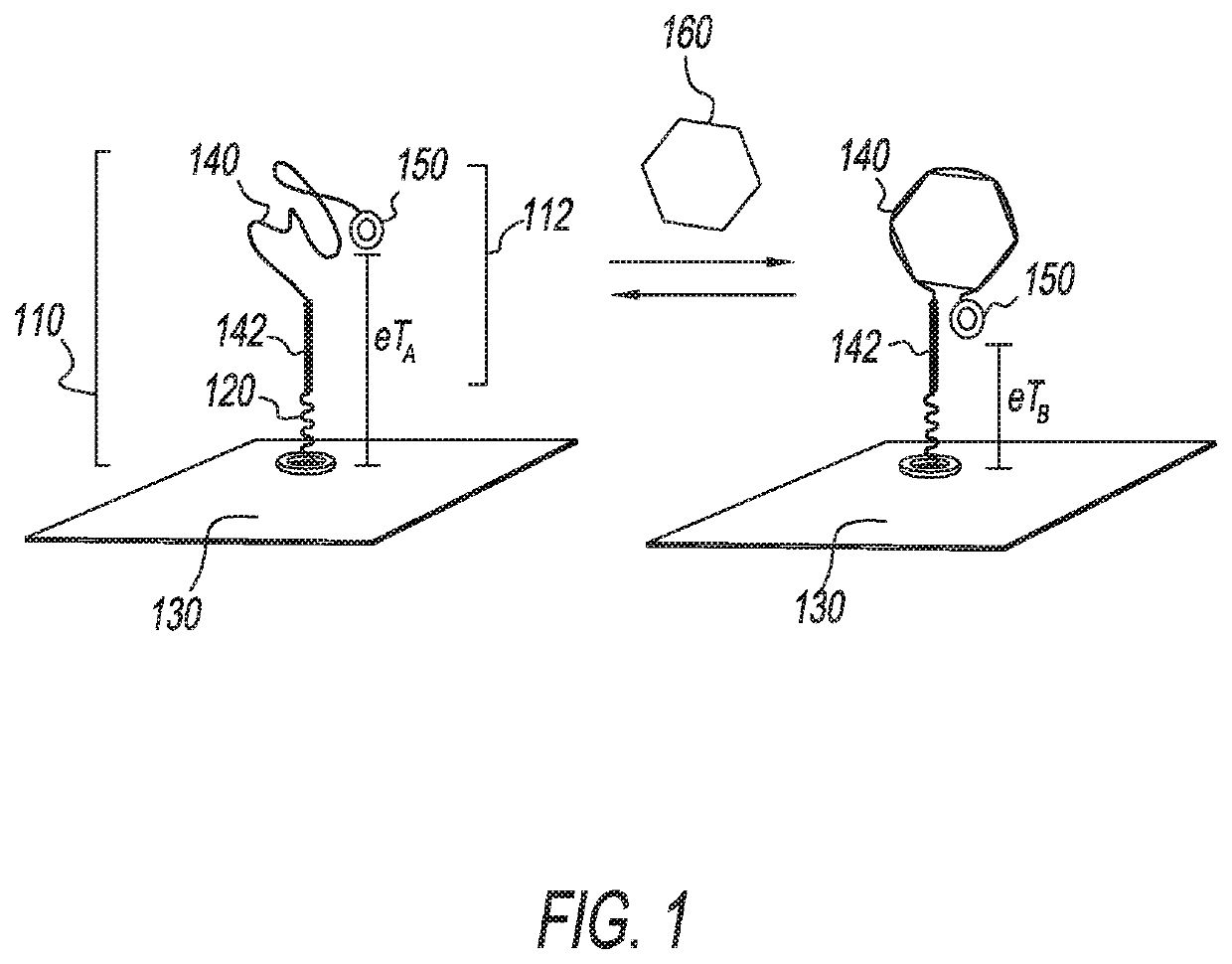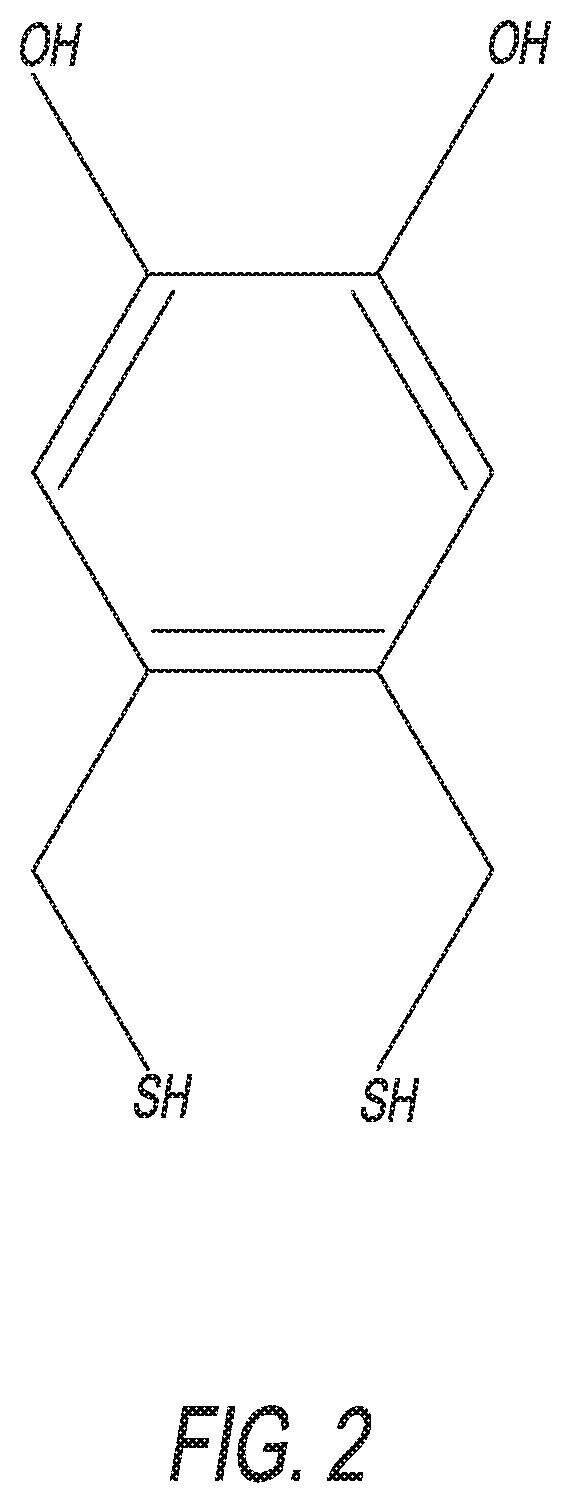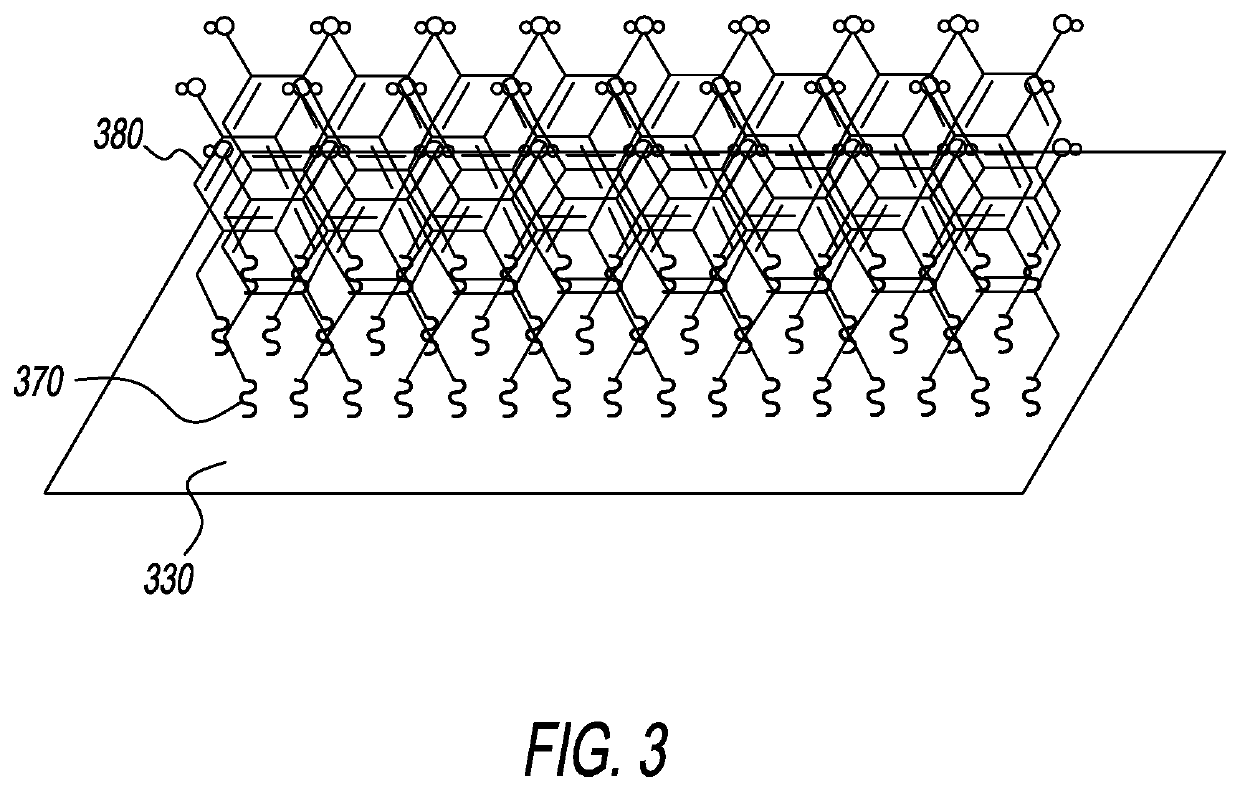Thiolated aromatic blocking structures for eab biosensors
- Summary
- Abstract
- Description
- Claims
- Application Information
AI Technical Summary
Benefits of technology
Problems solved by technology
Method used
Image
Examples
example synthesis
Step 2
[0051]With reference to FIG. 6B, this step is a reduction of the acetate groups using lithium hydroxide (LiOH) in low molarity and at ambient temperature. Add aqueous 0.2 M LiOH to a solution of 4,5-bis(sulfanylmethyl)-1,2-phenylene diacetate (1 equiv.) in tetrahydrofuran (THF), at 25° C., and stir the mixture for 1 to 2 hours. Then, quench the reaction mixture with H2O (5× the amount of LiOH). The biphasic reaction mixture is then extracted with ethyl acetate (EtOAc), and the combined organic layers are dried using magnesium sulfate (MgSO4), and then concentrated. Separation and purification with chromatography provides the final product of 4,5-bis(sulfanylmethyl)benzene-1,2-diol. This reaction step has an ideal yield of 92%.
[0052]The disclosed enhanced-stability dithiol blocker group / aptamer tether may be alternatively formulated. For example, possible alternative versions include the following: 4,5-bis(sulfanyl)benzene-1,2-diol, see FIG. 7; 4,5-bis(sulfanyl)pentan-1-ol, see...
PUM
 Login to view more
Login to view more Abstract
Description
Claims
Application Information
 Login to view more
Login to view more - R&D Engineer
- R&D Manager
- IP Professional
- Industry Leading Data Capabilities
- Powerful AI technology
- Patent DNA Extraction
Browse by: Latest US Patents, China's latest patents, Technical Efficacy Thesaurus, Application Domain, Technology Topic.
© 2024 PatSnap. All rights reserved.Legal|Privacy policy|Modern Slavery Act Transparency Statement|Sitemap



